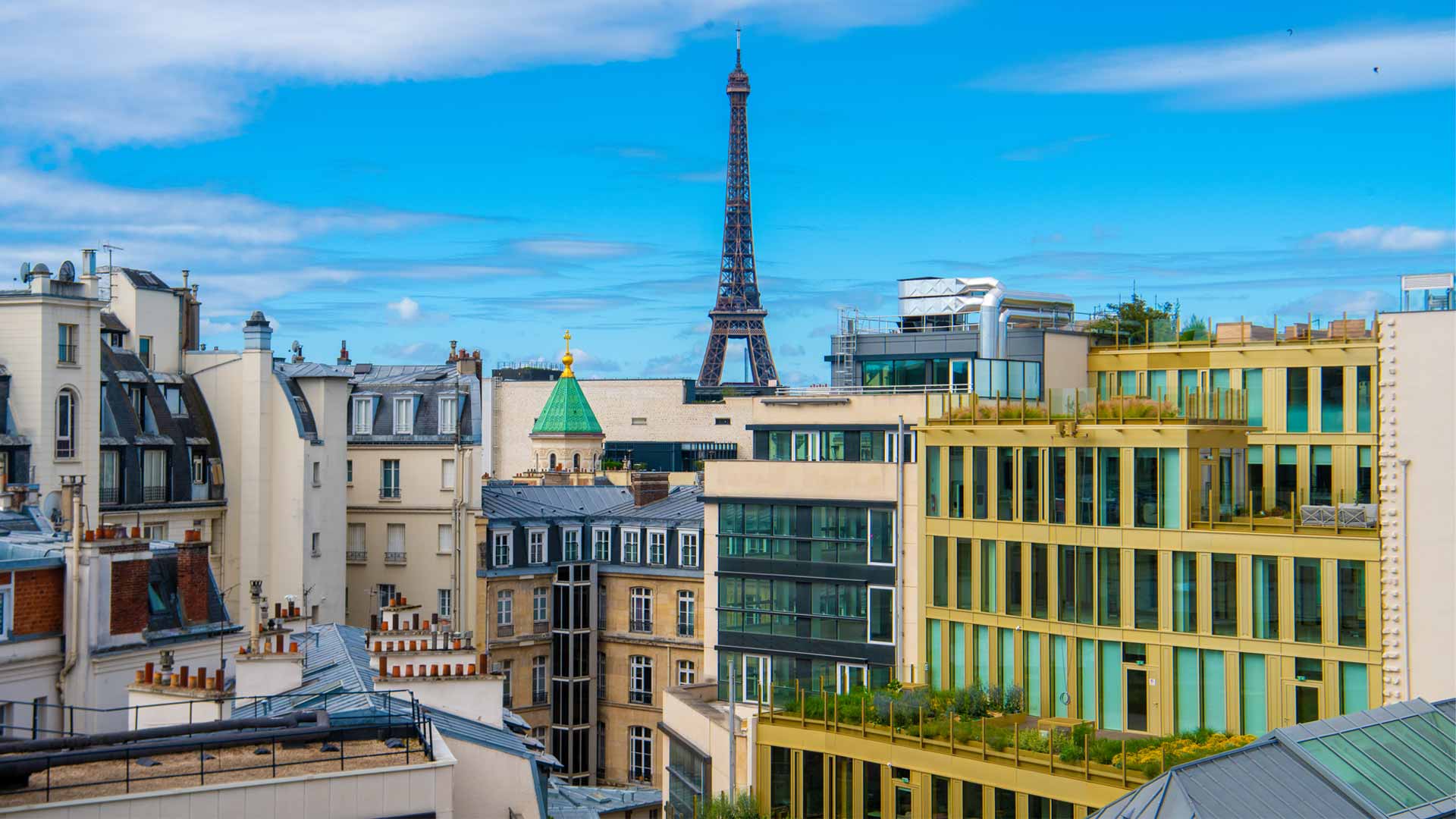
To meet the challenges of housing and climate issues, Paris has redefined its urban planning rules. After extensive consultation, the Local Bioclimatic Urbanism Plan was approved on November 20, 2024 by the Paris City Council. Here are the main measures in this document that will shape the face of the capital for the years to come!
What are the objectives and new features of the Local Bioclimatic Urbanism Plan?
Objective: Make it possible for everyone to find housing in Paris
The bioclimatic urban development plan (PLU) strengthens the arsenal of measures for the creation of housing of all types in order to better meet the needs of Parisians.
New features
- Approximately 800 addresses identified with the mayors of the boroughs to create social housing, of which more than a third are office buildings;
- The creation of a “hyper-deficit” zone in social housing (in certain districts in the center and Western Paris): 50% of each project must be devoted to social housing;
- The obligation to create housing in large office complexes: for all major restructuring projects or projects that involve the creation of more than 5,980 sq. yards of office space in western Paris, at least 10% of the surface area of a building must be devoted to the creation of housing.
- The development of genuine joint leases (BRS), which allow for less expensive home ownership through the separation of land and buildings, particularly for the middle classes;
- A ban on new tourist accommodation in districts where there are already too many such establishments, particularly in the center of Paris, in order to protect access to housing for Parisians.
Concrete measures:
- Paris Center: ban on creating furnished tourist accommodations
- 8th arrondissement: creation of social housing on the Champs-Élysées
- • All arrondissements: creation of social housing
Objective: Adapt Paris to respond to the ecological emergency
The bioclimatic urban development plan aims to strengthen biodiversity and adapt the capital to heat waves and flooding. It provides greater protection for existing green spaces and will create new gardens.
New features
- The designation of all protected green spaces as sanctuaries;
- The Rives-de-Seine park will no longer be open to motorized traffic;
- Approximately 55 hectares of new green space created in 10 parks, which will be greatly expanded or created. Contribution to the target of 300 additional hectares of green space open to the public by 2040;
- A large metropolitan park in northern Paris, from Porte de la Chapelle to La Villette: a green belt of over 25 hectares, including 15 hectares of parkland, will span the 18th and 19th arrondissements;
- 40% of public space in Paris will be de-sealed by 2050;
- On all plots larger than 179 sq. yards, up to 65% of open ground must be provided for in the projects with no possibility of exemption;
- The census and protection of 100,000 protected roadside trees;
Concrete measures
- 5th arrondissement: creation of a garden at Val-de-Grâce
- 12th arrondissement: extension of the Parc aux Messageries, preservation of the “Green Oasis”, classification of numerous trees in the Bois de Vincennes as remarkable trees.
- 20th arrondissement: garden and sports areas in Python-Duvernois.
Objective: A new approach to construction
The PLUb favors the renovation of existing buildings, with a view to energy conservation, as with the materials used.
New features
- Renovation is becoming the new standard for reducing the environmental impact of construction. Demolition will become an exception;
- The building of additional floors will be subject to the creation of housing and the removal of pavement from courtyards.
- The reuse of materials in all new projects;
- Environmental-friendly construction: 100% concrete construction will be banned in favor of materials with a low carbon footprint (wood, hewn stone, hemp, raw earth), and ambitious energy performance for better comfort in winter and summer. The regulatory thresholds have been surpassed.
- Thermal renovation is encouraged, with respect for Parisian heritage in accordance with the joint recommendations made by the Commission du Vieux Paris and the Agence Parisienne du Climat;
- The ban on external air conditioning systems in buildings;
- The development of renewable energy and vegetation on all roof terraces;
- The production of renewable energy is mandatory for all projects over 1,196 sq. yards.
Concrete measures
- Paris Center: renovation and elevation of a building on rue du Petit-Musc and removal of waterproofing in the building's courtyard
- 15th arrondissement: reuse of materials for the renovation of the Frédéric Chopin music academy
Objective: A local urban plan (PLUb) serving the 15-minute district
The bioclimatic local urban plan helps to provide a better living environment by strengthening public services with new essential facilities near people's homes.
New features
- Places reserved for facilities and services that are close to residents: new health centers, new gymnasiums and swimming pools, new libraries and media libraries, etc.
- A green and sports belt around the ring road;
- Protect existing local businesses: cultural (galleries, bookshops, record shops), food outlets, urban logistics, and those dedicated to the social and solidarity economy;
- The ban on dark stores and dark kitchens: the City continues its fight against the predatory economy;
- More and more space for bicycles, with parking facilities provided as the norm in new constructions.
Concrete measures
- 5th arrondissement: protection of businesses on Boulevard Saint-Michel
- 8th arrondissement: creation of early childhood facilities
- 17th arrondissement: creation of public facilities
Focus on an innovation: positive externalities
The innovative character of the bioclimatic urban development plan is particularly illustrated by the project's system for promoting positive externalities. Implemented in the UG (general urban) zone for new constructions or major renovations of over 179 sq. yards of floor space, this system will allow project leaders to choose, according to the site's characteristics and the nature of the project, the areas of its regulatory outperformance.
- three themes: biodiversity and the environment, programming, energy efficiency and frugality.
- and nine criteria: percentage of construction-free space, percentage of green space, reuse of rainwater, social inclusiveness, diversity of urban functions, activities on the ground floors, energy performance of the building, comfort in summer, reduction of carbon impact.
In addition to the need to comply with the provisions of chapters 1 to 7 of the regulations, obtaining a building permit will be conditional on the project in question outperforming at least three of these criteria in two different areas.
See all the information on the first PLUb:
The east Paris Local Urban Development Plan (PLU) - City of Paris
Visual © Christophe Jacquet / City of Paris

